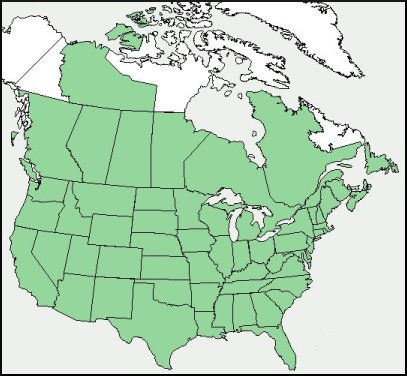Hemp Dogbane
Common Name: Hemp Dogbane.
Scientific Name: Apocynum Cannabinum.
What to look for? In summer, look for a cluster of tiny, white flowers. In the late spring, the Hemp Dogbane develops an erect light green to red, central stem with opposite leaves. As summer starts, it branches abundantly. Hemp dogbane can be identified by its long, opposite (2 leaves per node), elliptical, and smooth edged leaves. It can also be identified by its small, 5-petaled bell-shaped flowers that are greenish-white and form in dense clusters located at the ends of main stems and primary branches. The Hemp Dogbane has a long-rhizomatous root system, which will often produce colonies of plants. All parts of the plant exude a milky sap when cut, broken, or crushed.
Where can they be found at Carillon Stonegate Pond? In spring, you can find the Hemp Dogbane growing along the walking path next to Carillon Stonegate Pond and the fields adjacent to the woodlands. In summer, you can find the Hemp Dogbane’s tiny white flowers in full bloom!
How big are they? Hemp Dogbane grow in height to between two and one-half feet and five feet tall. The leaves may be up to three and one-half inches long and up to one inch across. Each flower is about one-quarter of an inch long and approximately one-tenth of an inch across.
Where do they grow and thrive? Hemp Dogbane is a native of North America and its range extends throughout the continental U.S., including all of Illinois. Habitats include wet prairies, prairie swales, soggy thickets, moist meadows along rivers, edges of swamps, seasonal wetlands in open areas, abandoned fields, roadside ditches, and depressions along railroads.
When do they bloom? The blooming period occurs from June through August.
Do birds, insects or other wildlife associate with this plant? The abundant nectar of the Hemp Dogbane flowers attracts many kinds of insects, including a variety of bees, wasps, and flies, butterflies, skippers, and beetles. The larvae of several moths feed on Hemp Dogbane.
Interesting Facts About Hemp Dogbane:
-
The Hemp Dogbane is also known by Common Dogbane and Indian Hemp.
-
Hemp dogbane is generally a problem weed in soybean fields, where data indicates that about 3 hemp dogbane shoots per square foot reduced yields up to 90%.
-
The stems and leaves contain a milky latex that is bitter-tasting and toxic.
-
Another common name for this plant is Indian Hemp, because native Amerindians obtained strong silky fibers from the stems to use as twine in basketry, mats, netting, rope, and other artifacts.
-
This species can become a serious weed as it is aggressive and difficult to control.
For more information on the Hemp Dogbane and sources of information used in this blog (these are several of the sources that I am using to learn as I blog), please visit Illinois Wildflowers, Missouri Botanical Gardens, University of Texas Wildflower Center, and U.S. Department of Agriculture.
The Carillon at Stonegate community is very fortunate to have a variety of wetland, forest and prairie environments conducive to a variety of birds and other wildlife, insects and plants. Our community and the Kane County Forest Preserve do an exceptional job in maintaining this natural environment – both for the benefit of the birds and wildlife and for our residents to enjoy.
Take a hike and see what you can find – and identify!



